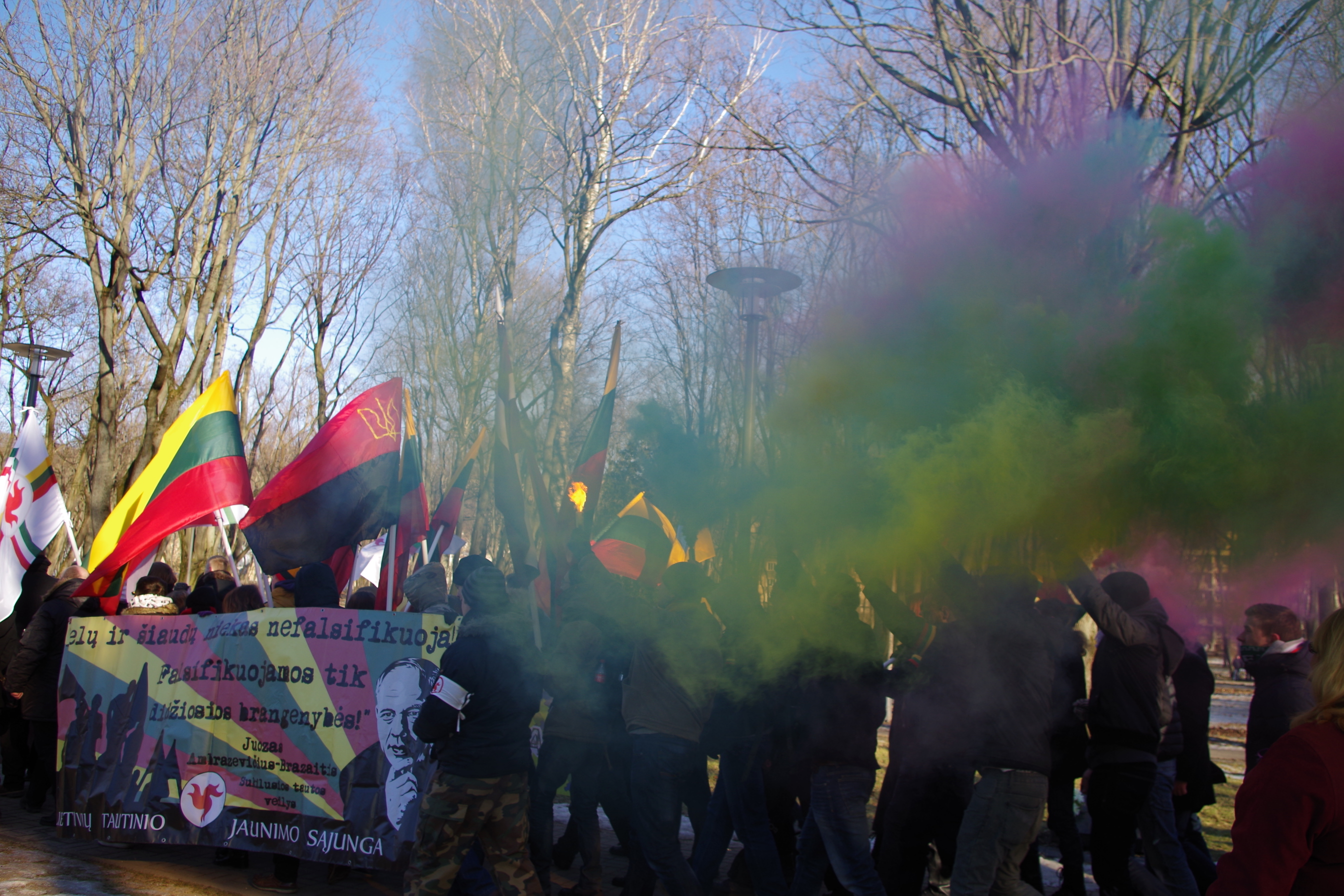Following what appeared to be a series of diversionary actions, an annual march by Lithuanian nationalists, xenophobes and neo-Nazis through the center of Lithuania’s second largest city, Kaunas, appears to have failed this year.
In earlier years the number of marchers easily reached 1,000. This year barely 300 turned out, and the march began at least an hour and a half later than planned.
The reason for the small turnout seems to be a series of false reports in the mainstream and internet social media by the nationalists themselves, apparently designed to throw off the small but equally determined mix of local and foreign observers and protestors who come each year to document and oppose the hate event.
That something had gone horribly wrong for the motley crew of skinheads and fascists who have organized the event for the last six years was obvious by 1:00 P.M. on Monnday, February 16, when the march was scheduled to pull out of Ramybes Park in central Kaunas and head towards Laisves Aleja, Freedom Alley, the pre-war capital city’s main pedestrian promenade. A small contingent of perhaps fifty people stood around waiting for organizers to tell them what to do, while the usually also plentiful police force were only just arriving and in very limited numbers.
The problem appears to have been twofold: false stories planted in the mainstream media, and at least two competing marches by both a pro-Communist group and a competing nationalist group from Siauliai, Lithuania.
Looking for all the world like a disinformation plant, an article appeared on the Lithuanian news website Delfi.lt claiming members of the Jewish community had sent letters of protest to the mayor of Kaunas concerning a march which was a day late, on February 16, rather than some march said to have been planned for Sunday, February 15. The article appeared just before the event and claimed the nationalist groups themselves had announced the changeover to the 15th on social media sites.
In point of fact a march by a competing nationalist group did take place on Sunday, but did not receive the blessings of the Kaunas police in the form of a marching permit, and stopped short of their goal, reaching a church which marks the beginning of the parade route along Freedom Alley and stopping there. Reportedly ultranationalist and left-leaning protestors clashed there on the steps of the church at what was nominally an anti-NATO meeting.
There were also reports of a nationalist march in Kaunas on Monday morning, February 16, 2015, which began at 11:00 A.M., but apparently failed to attract many marchers.
The usual group of observers attended what was the main march on Monday afternoon, although the Lithuanian anti-fascist group who have protested the neo-Nazis in previous years were not visible or vocal.
The marchers began and ended their event with tri-colored smoke bombs meant to represent the colors of the Lithuanian flag, and some sort of choreographed swastika dance visible only from the air. They had a model airplane equipped with a camera during this, their final dance macabre. While their numbers at the staging area probably never topped 250, there were clearly a few more by the end of the march who had joined up somewhere along the route, pushing their numbers towards 300 or 350. The only political figure at all visible this year was Sustauskas, a cantankerous Kaunas-based politician who has been roundly condemned by most Lithuanian political pundits since he appeared on the public stage in the late 90s. He only appeared briefly at the park before the march and did not join the march. Lithuanian plainclothes security guarded the foreign observers.


